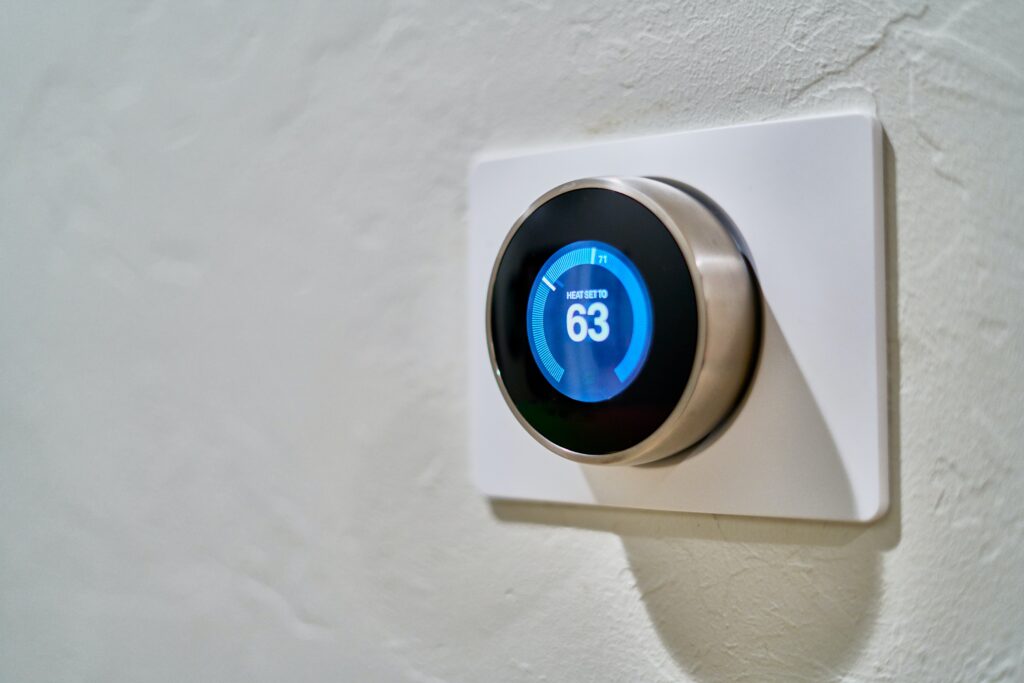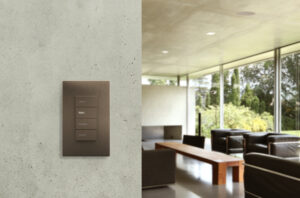Earth Day falls on the same day every year: April 22. But the purpose of International Mother Earth Day is something we as humans need to carefully consider the other 364 days of the year, too.
When it comes to building a more sustainable future for our world, we as individuals must do our part no matter how big or small. Making your home greener with eco friendly home improvements is one way in which to give back to the earth. If you’re not sure where to get started in reducing your footprint and making your home a more sustainable abode, here’s an easy tip to digest.
The name of the game is reducing waste in any way we can. Whether that’s addressing physical waste by recycling more conscientiously or understanding how our homes waste energy and implementing the right smart technology to stop it from continuing, there’s something that everyone can do to play their part.

Table of Contents
Here are a few eco friendly home improvements to make your home greener (and more sustainable), thanks to smart home technology and the smart humans who decide it’s time to make a change.
1. Seal Your Home
Whether you realize it or not, you may be losing a significant amount of heat right through the top of your house. If your attic area is either under-insulated or unsealed in any way, you’re not only wasting a lot of energy, but you run the risk of encountering frost buildup. If this continues to happen over time, the saturation of the roof decking could cause areas to decay. What’s worse is if that frost then melts and wets any attic insulation, it renders it useless in keeping the rest of your home from regulating temperatures.
The best way to avoid these issues is to stop the flow of air into your attic space by sealing or insulating the area well. Not only will this make it so much easier to regulate temperatures in your house, but you’ll reduce your overall energy usage, all year round.
2. Opt for Double-Pane Windows
There’s a reason that double pane windows are quickly becoming the industry standard — they really help your home retain its heat (or cold in the summer months)! With the right windows in your home, you can reduce the amount of energy that’s able to escape by up to 50%!
Utilizing double pane windows also lowers your environmental footprint by burning less fossil fuels and creating far fewer greenhouse gas emissions.
3. Use Natural Light
We often take our access to electricity for granted. With just the flip of a switch, we have more light than we know what to do with! But natural light also plays a significant part in creating a more sustainable home environment. Not only does outside light reduce your reliance on artificial lighting and external energy throughout the home, but it can also warm things up with the natural heat of the sun!
4. Change to LED Light Bulbs
If you happen to live in a place where there’s less natural light to utilize during the colder months of the year (like lovely Michigan), then it might be time to upgrade the artificial lighting in your home to LED lights. Light-emitting diode lighting works approximately 90% more efficiently than those traditional, incandescent bulbs. Not only do they help save energy all around your home, LED light bulbs also come with a significantly longer life expectancy of anywhere from 50,000 hours to 100,000 of light!
5. Upgrade to Energy Efficient Smart Appliances
Yes, the initial cost for upgrading to energy efficient smart appliances could be cost-prohibitive for some, but the benefits can be priceless in the long-run. In fact, using energy-efficient appliances is one of the best ways to reduce your carbon footprint over time.
Smart appliances are better on both an economic level and an environmental one. For example, your new smart dishwasher will optimize its electricity and water use, which will in turn lower your utility bills while also lowering greenhouse gas emissions and other pollutants.
6. Install Smart Thermostats
Just like those handy smart appliances, a smart thermostat is going to be your best friend when it comes to creating a sustainable, green home. Studies have indicated that smart thermostats were instrumental in reducing household emissions and excessive energy use by keeping temperatures in the home more consistent throughout the day and night. This eliminates the need for the heating system to turn on and off constantly in order to bring temperatures back up to whatever it is set on.
Plus, a smart thermostat can help you monitor your home from anywhere, so you can keep the temps lower when the house sits empty, and warm things back up right before you head home. Having the ability to turn up or down the heating or cooling system in a home via a smart device can help you as a homeowner become more aware of your energy usage, and find new ways to cut back!
7. Use Smart Leak Detectors
Smart technology has a knack for helping us to live smarter, and these innovative leak detectors are no exception. Household leaks, particularly in the bathroom, have been found to waste upwards of 180 gallons per week in certain situations. Even just a slow leak from a faucet can cause you to waste thousands of gallons of water each year!
A smart leak detector carefully monitors water flow levels in order to develop the pattern of water flow. This is done by either counting the gallons of water that pass through the sensor or by sonically recording any time delays. Others can detect moisture and will shut off the flow automatically to stop any further issues from occurring.
Beyond saving you from wasting a ton of water if a leak were to occur, it will also save you from some major water damage throughout your home in the long run!
8. Invest in Low-Flow Bathroom Accessories
Did you know that standard toilets can use up to seven gallons of water with each flush? Depending on how often you use the bathroom, it can add up fast! Meanwhile, low-flow toilets only use 1.6 or less gallons of water per flush. That means that replacing your old, inefficient toilet with a low-flow model could help your home to reduce water waste by nearly 13,000 gallons each year.
Similarly, low flow shower heads are able to conserve water by approximately 15,000 gallons per person a year. Plus, with less water going through the heating process, the less electricity and carbon dioxide output there is, too! You can also upgrade your low flow shower head to be put on a timer to cut back on the time you spend just standing under the stream of hot water.
9. Unplug Power-Zapping Electronics with a Smart Plug
Smart plugs go right into the wall, with the same outlet opening that allows you to plug any electronics directly into its port. But this isn’t your average wall plug anymore. No, now it’s smart, which means you can control whatever device you have plugged into it, remotely.
This WiFi-enabled connectivity can let you turn the plug on and off from your smartphone, device, or even with the help of an AI virtual assistant like Google Home or Amazon Alexa. Plus, you can set it to turn on or off on an automatic schedule so you never have to ask yourself if you remembered to turn it off before leaving the house. The possibilities are endless with smart technology at our fingertips!
10. Consider Renewable Energy
Still looking for that perfect eco-friendly home improvement project? There are other alternative energy sources you could consider versus the traditional natural gas route your local utility company offers. Whether you’re interested in installing solar panels, adding ground source geothermal heat pumps, or going big with a small wind turbine, renewable energy options are going to not only make your home more sustainable today but ensure a greener, smarter tomorrow for future generations.
Make the Sustainable Choice with Eco Smart Home Pros
When it comes to smart home technology, the sky’s the limit — but where do you even get started? That’s where our team of experts comes in. As your trusted West Michigan and Upper Peninsula smart home integration team, Eco Smart Home Pros wants to help you make your dreams a reality. Whether you’re looking to bring your vision for a sustainable home to life or just testing the waters to see what smart tech might make your house feel more like a home, we’re here to help you find the answers to your questions.
Send us a quick message and let’s get started.


